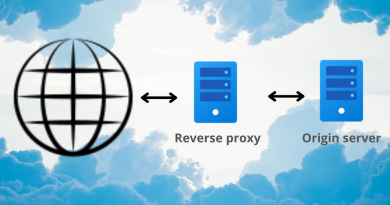What is natural language processing? Introduction to NLP
What is natural language processing (NLP)?
NLP is a field of computer science and artificial intelligence that deals with the interactions between computers and human (natural) languages. In particular with natural language understanding by computers and how to program computers to process and analyse large amounts of natural language data.
Purpose of NLP
The goal of NLP is to make it possible for computers to understand human languages and respond in a way that is natural for humans.
How does NLP work?
NLP algorithms are designed to automatically analyze and understand human language data. This can be done in a number of ways, but typically involves some combination of machine learning, deep learning, linguistics, and statistical methods.
What are some applications of NLP?
Natural language processing projects can include computational linguistics applications such as speech recognition, text classification, sentiment analysis, topic modeling, information extraction, machine translation, and question answering.
Why is NLP important?
NLP is important because it allows computers to better understand human language data. This understanding can be used to improve a variety of tasks, such as information retrieval, machine translation, and question answering.
What are some of the challenges in natural language processing?
One of the key challenges in NLP is understanding human language. Languages are complex, often ambiguous, and constantly changing. This makes it difficult for computer systems to accurately process and interpret human language.
Another challenge is dealing with the large amount of data that is generated by humans. Every day, billions of people around the world generate trillions of pieces of text data. This includes things like social media posts, email messages, articles, and books. Processing all this data can be very difficult for computers.
Word sense disambiguation Is another difficulty. This is the task of determining the meaning of a word based on its context. For example, the word “bank” can refer to a financial institution, or it can refer to the side of a river. Computers have difficulty understanding the meaning of words in different contexts.
One final challenge is dealing with idiomatic expressions. These are expressions that have a meaning that is different from the literal meaning of the words. For example, the phrase “I’ll be back” does not mean that the person will actually return. It usually means something like “I’ll see you later.” Computers have difficulty understanding idiomatic expressions.
Despite these challenges, natural language processing is a rapidly growing field with many exciting applications. It is one of the key technologies that will shape the future of artificial intelligence.
Natural language processing examples
NLP has many potential applications. Some of the most promising ones include:
- Machine translation:
NLP can be used to develop software that can automatically translate text from one language to another. This could be used to help people communicate across language barriers, or to quickly translate large documents.
- Information retrieval:
NLP can be used to develop software that can automatically search through large amounts of text data and find the information that you’re looking for. This could be used to build better search engines, or to help people quickly find the information they need.
- Question answering:
NLP can be used to develop software that can automatically answer questions posed in natural language. This could be used to build better virtual assistants, or to help people find answers to their questions more quickly.
What are some of the ethical and social implications of natural language processing?
NLP has the potential to radically change the way we interact with technology. It could be used to build better virtual assistants, automatically translate text, and retrieve information from large amounts of data. However, NLP also has the potential to be misused. For example, NLP could be used to automatically generate fake news articles, or to monitor and censor online content. As NLP develops, it’s important to consider the ethical and social implications of this technology.
Common Natural Language Processing tasks & techniques
Here are some common NLP tasks and techniques:
Text classification:
Text classification is the task of assigning a label (e.g., positive, negative, neutral) to a piece of text. This may be accomplished in a variety of ways, but most commonly it involves machine learning and natural language processing.
Sentiment analysis:
Sentiment analysis is the task of determining the emotional tone of a piece of text. This can be done in a number of ways, but typically involves some combination of machine learning and natural language processing.
Topic modeling:
Topic modeling is the task of automatically discovering the topics that are present in a collection of documents. This can be done in a number of ways, but typically involves some combination of machine learning methods and natural language processing.
Information extraction:
Information extraction is the task of automatically extracting information from a piece of text. This might be achieved in a variety of ways, but the most common is machine learning and natural language processing.
Machine translation:
Machine translation is the task of automatically translating text from one language to another. This can be done in a number of ways, but typically involves some combination of machine learning and natural language processing.
Natural language generation:
Natural language generation is the task of automatically generating text in natural language. This can be achieved in a variety of ways, but it most often entails some form of machine learning and natural language processing.
NLP research deals with the question of how to create computers that can communicate and understand human languages.
The first step in any NLP task is text preprocessing, which involves cleaning and normalizing the text data. This step is important because it can help improve the accuracy of NLP models.
After preprocessing, the next step is typically feature engineering. This step involves extracting meaningful features from the text data that can be used in machine learning models.
The last step is to train a machine learning model on the preprocessed and features text data. There are many different types of machine learning algorithms and models that can be used for NLP tasks, including support vector machines, decision trees, and neural networks.
Once a machine learning model has been trained, it can be used to perform various NLP tasks, such as text classification, sentiment analysis, and machine translation.
NLP is a rapidly growing field with many potential applications. As NLP technology develops, it’s important to consider the ethical and social implications of this technology.
How can I learn natural language processing?
If you’re interested in learning natural language processing, there are a number of resources that can help you get started.
Books:
- Speech and Language Processing by Daniel Jurafsky and James H. Martin is a comprehensive textbook on natural language processing.
- Natural Language Processing with Python by Steven Bird, Ewan Klein, and Edward Loper is a beginner-friendly book on natural language processing.
- Foundations of Statistical Natural Language Processing by Christopher D. Manning and Hinrich Schütze is a more advanced book on statistical natural language processing.
Online courses:
- Coursera offers a number of online courses on natural language processing, including an introductory course, an advanced course, and a course on deep learning for natural language processing.
- Udacity offers a nanodegree program on natural language processing.
- edX offers a number of online courses on natural language processing, including an introductory course and a course on deep learning for natural language processing.
MOOCs:
- Stanford University offers a free online course on natural language processing.
- Harvard University offers a free online course on natural language processing.
There are many different ways to learn natural language processing. Books, online courses, and MOOCs are all great resources for learning about this field.
Conclusion
Natural language processing is a field of computer science, artificial intelligence, and linguistics concerned with the interactions between computers and human languages. NLP research deals with the question of how to create computers that can communicate and understand human languages.
NLP is a rapidly growing field with many potential applications. As NLP technology develops, it’s important to consider the ethical and social implications of this technology.
If you’re interested in learning natural language processing, there are a number of resources that can help you get started, including books, online courses, and MOOCs.



